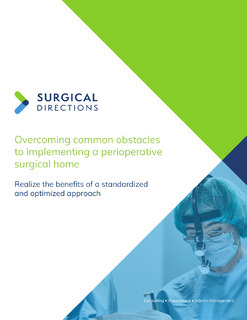Over the last 5 years, the perioperative surgical home (PSH) model has attracted increasing interest from OR directors, anesthesiologists, and surgeons. This team-based, patientcentered approach coordinates all phases of surgical care, from preoperative assessment through intraoperative care and postdischarge recovery. According to the American Society of Anesthesiologists, PSH initiatives have resulted in lower surgical complication rates, fewer readmissions, higher patient satisfaction, and lower episode costs.
Surgical Directions, a Chicago-based healthcare consulting firm, has seen similarly positive results from systems with a PSH in place. Despite growing interest in this model, however, many surgery department leaders are unsure how to launch a PSH, and even those who have started one tend to face stumbling blocks.
Pioneering hospitals have encountered most of these problems and developed effective solutions. Here are six of the most common obstacles to implementing a PSH, along with tested strategies for optimizing performance.

